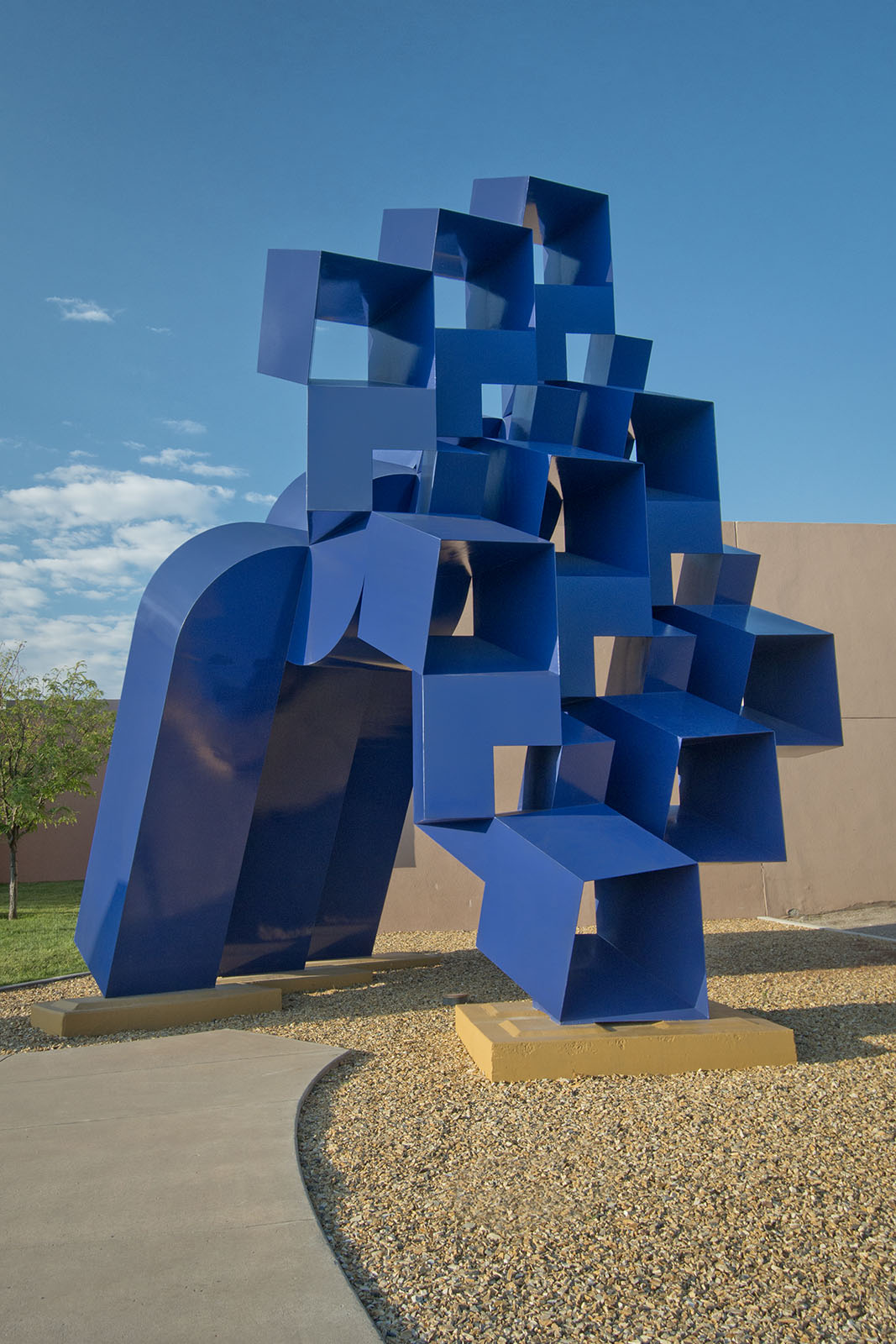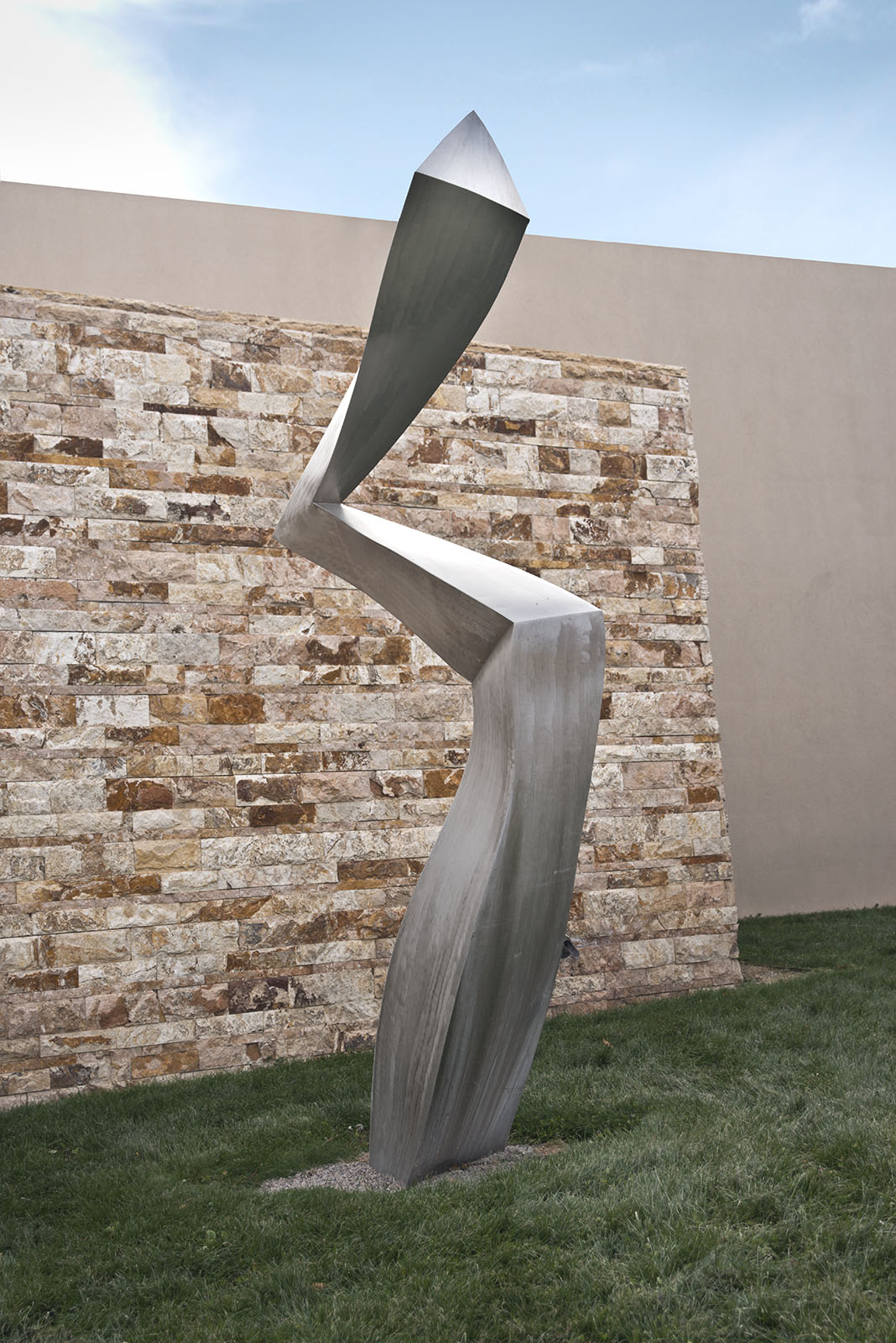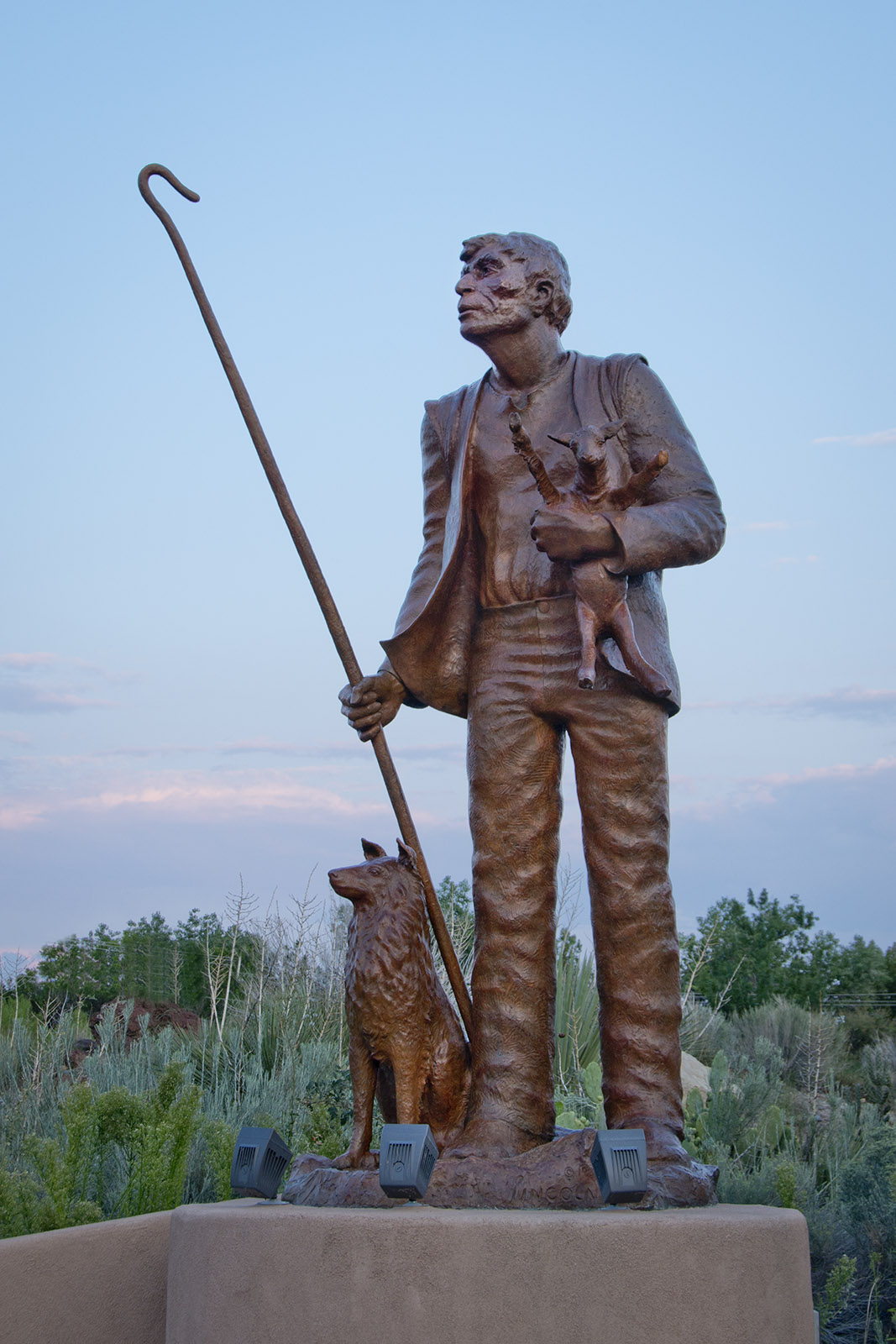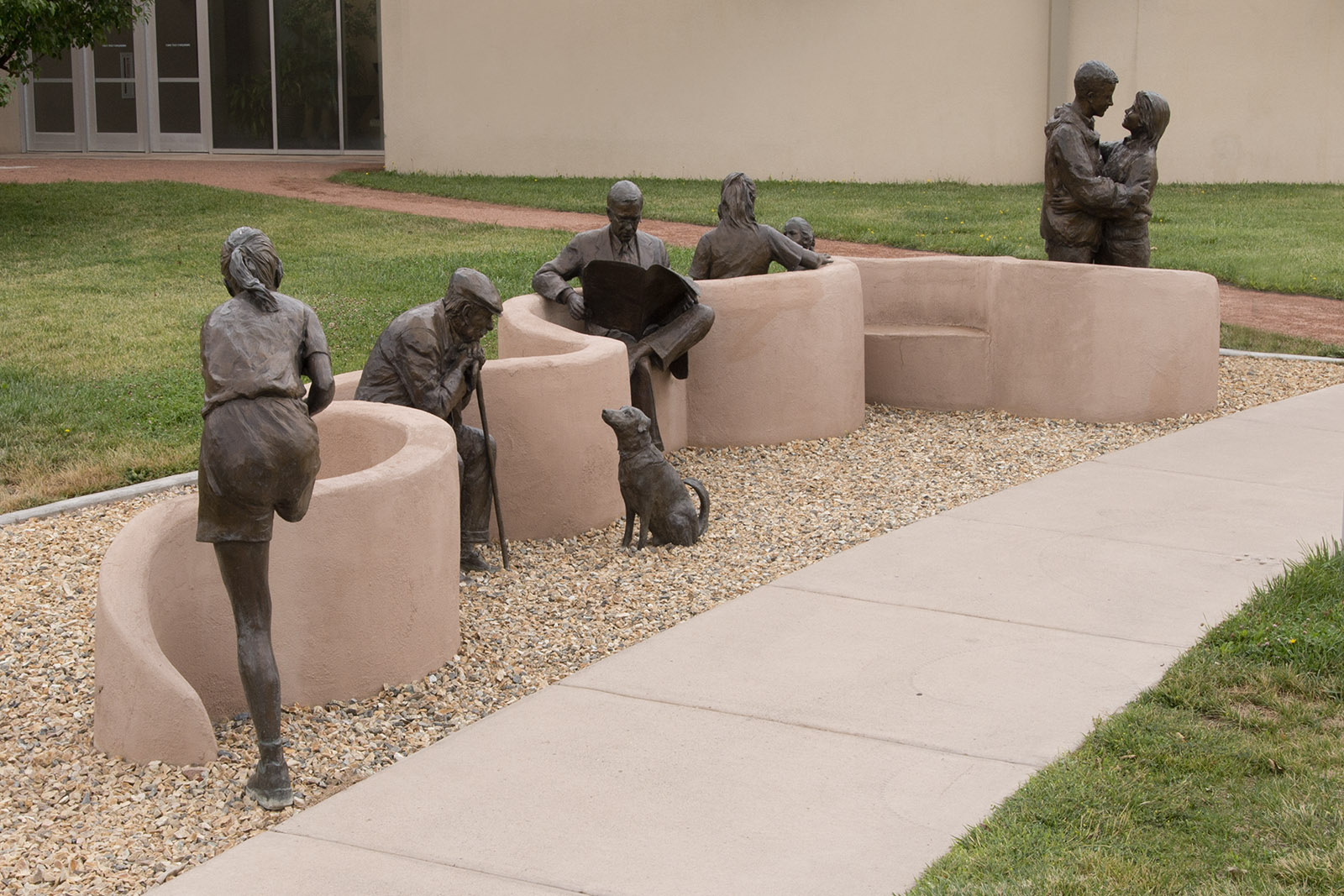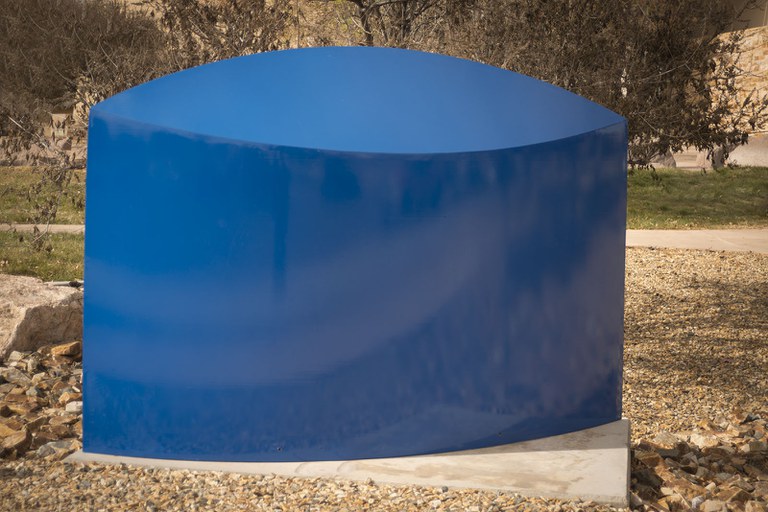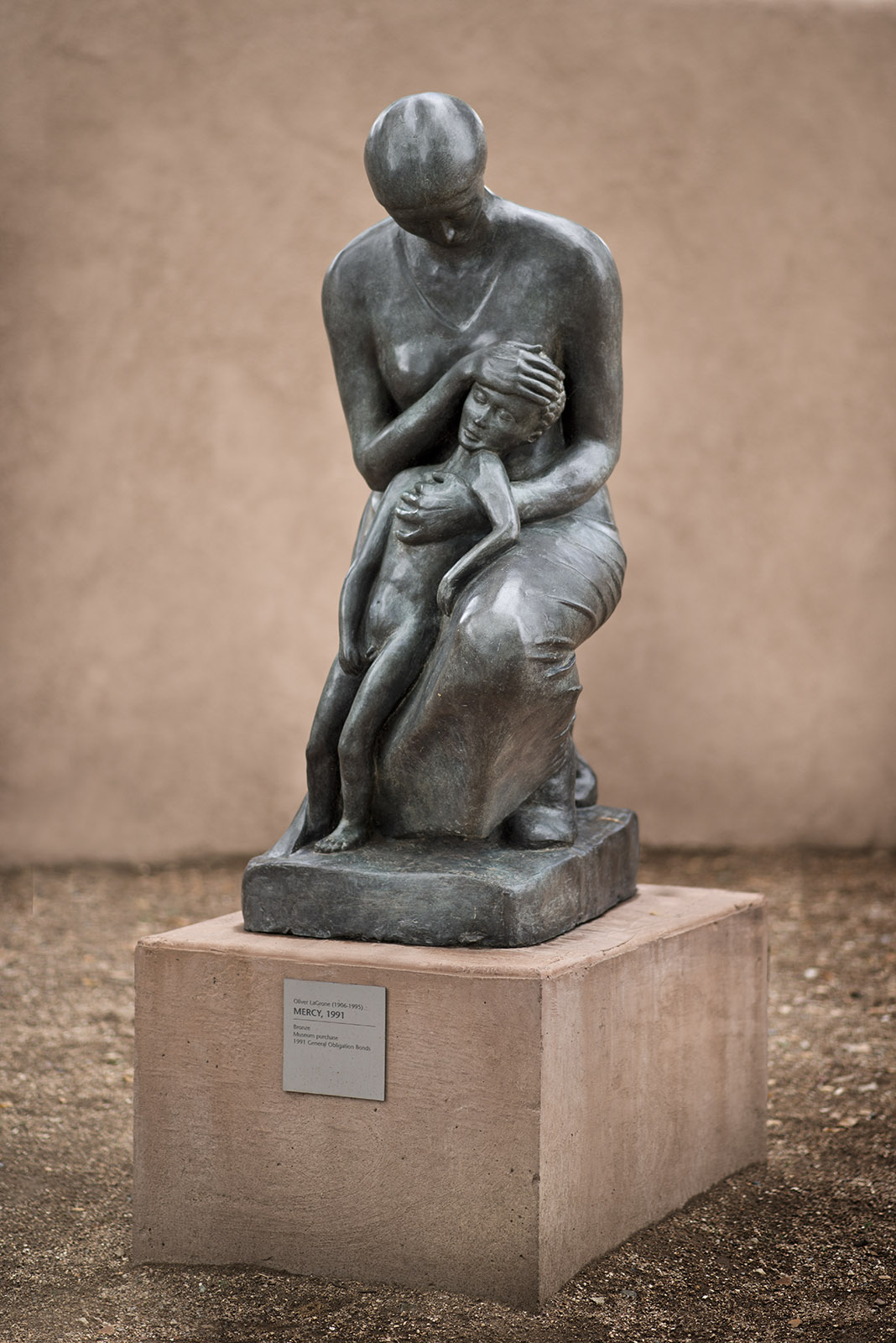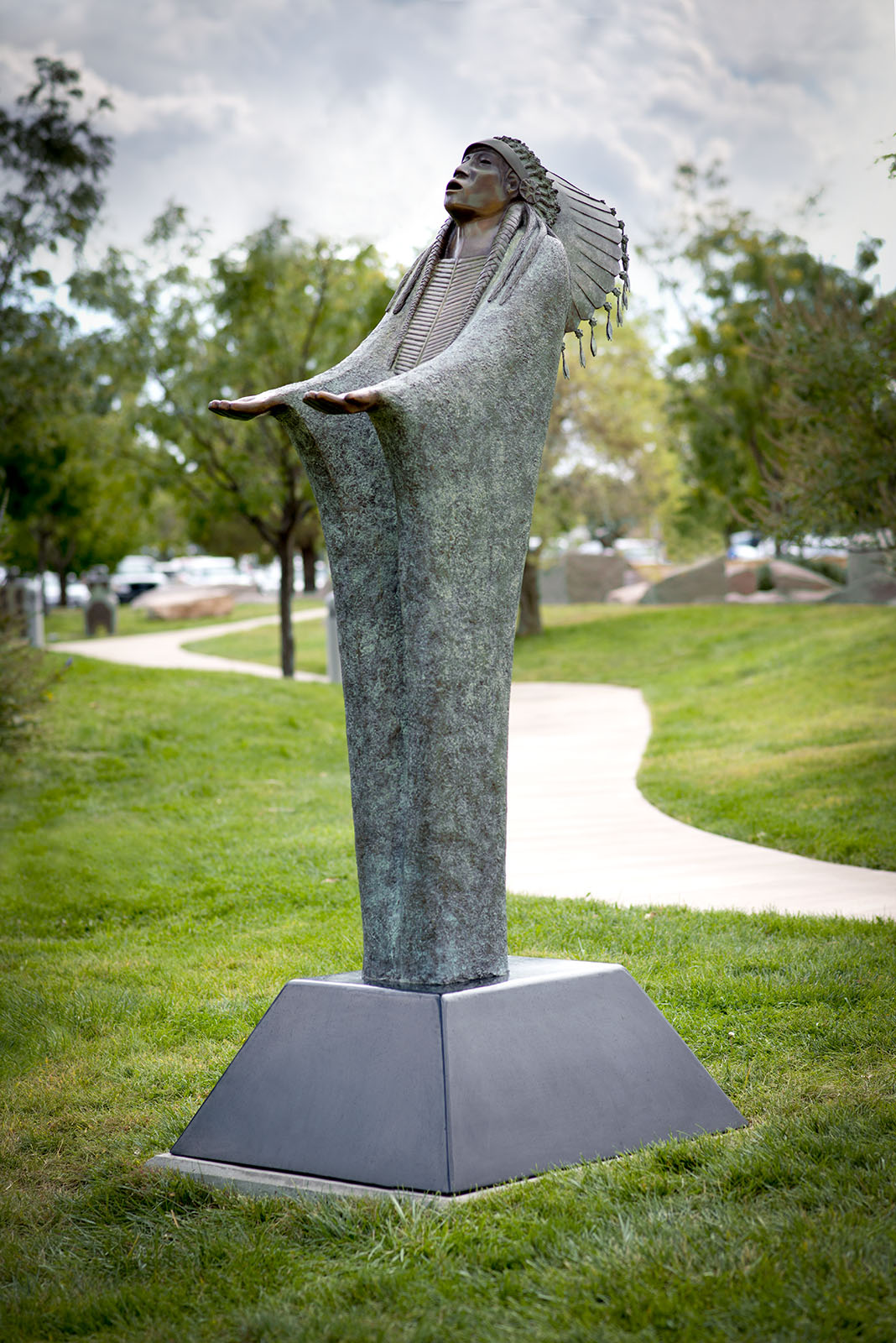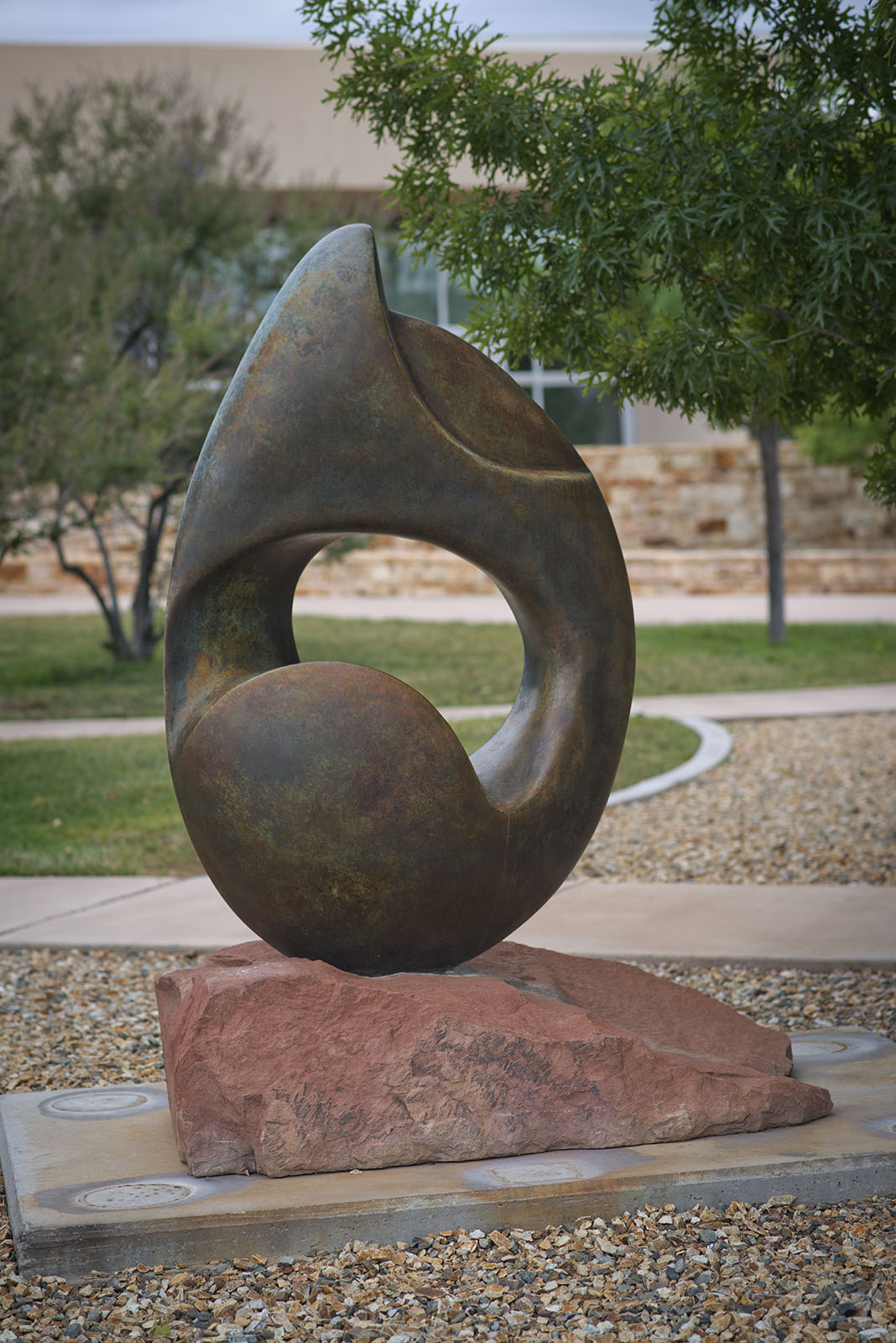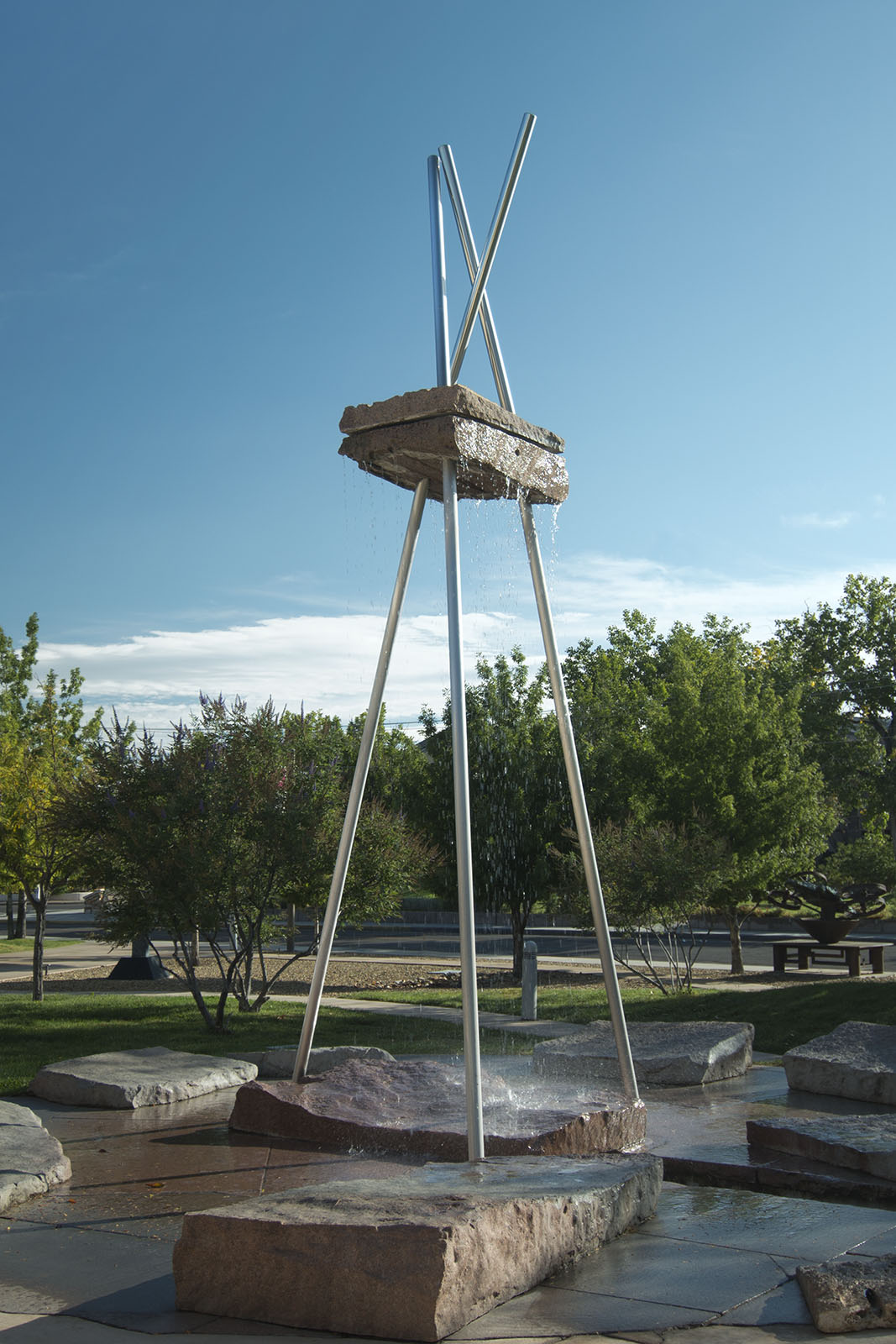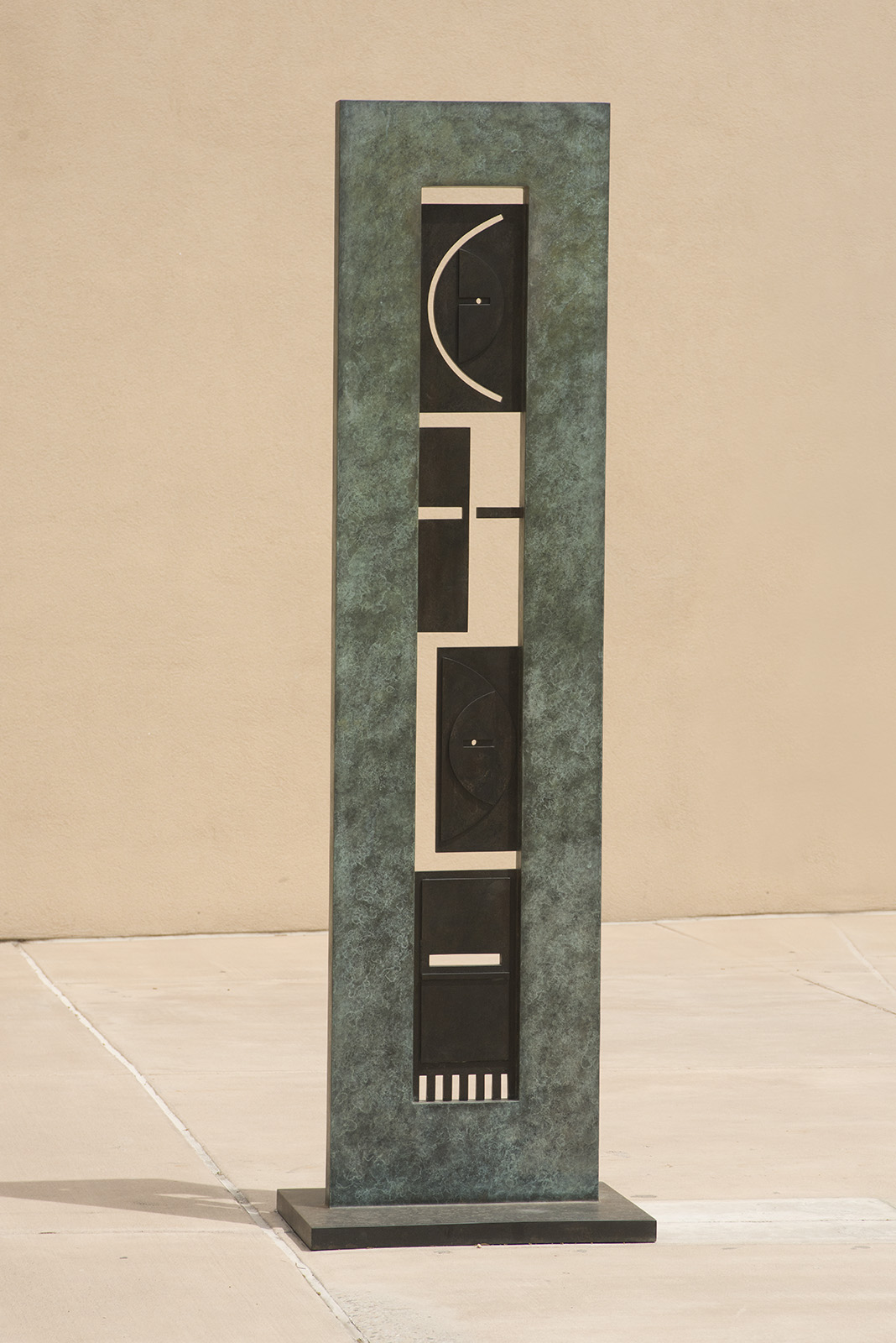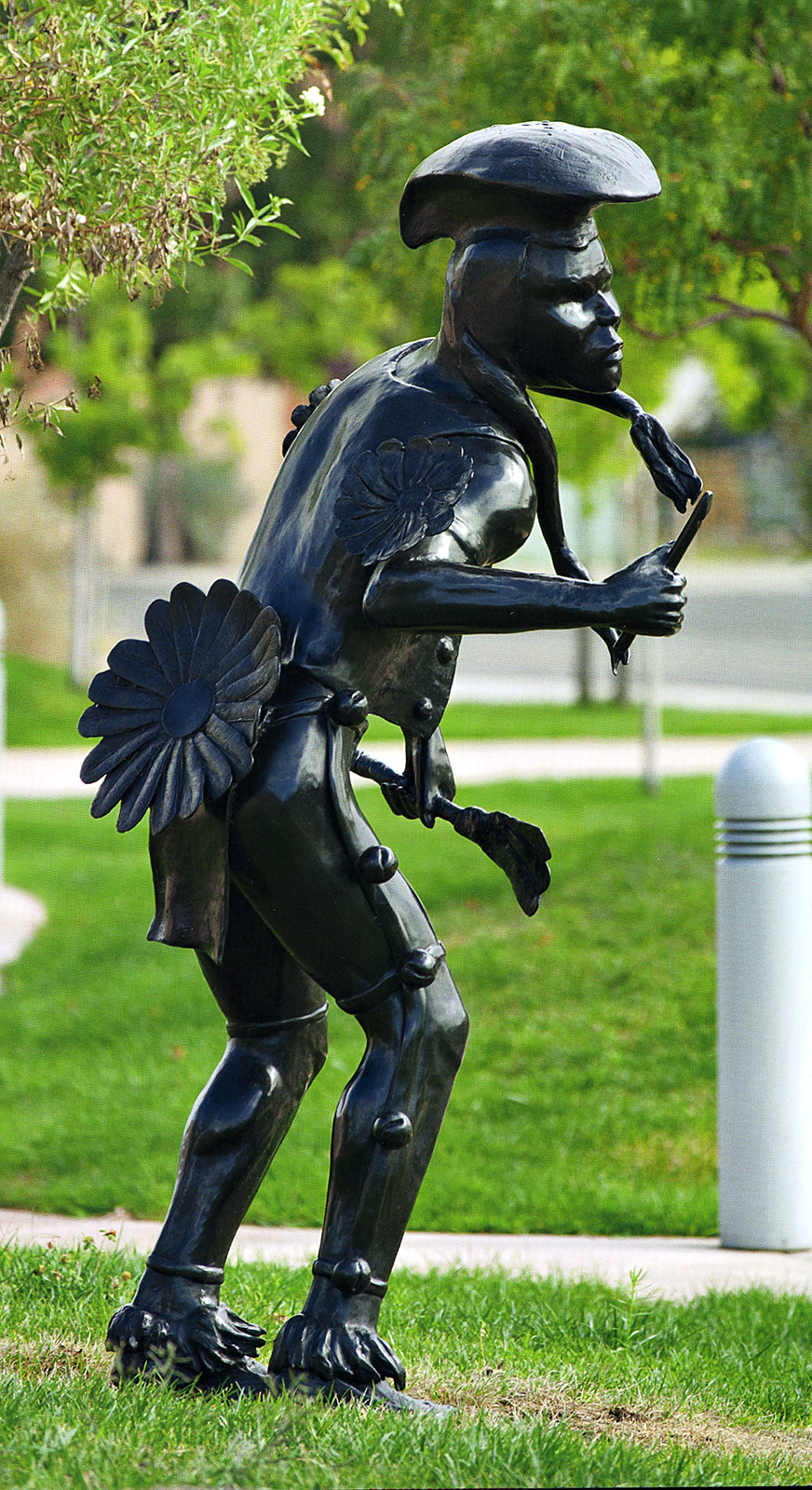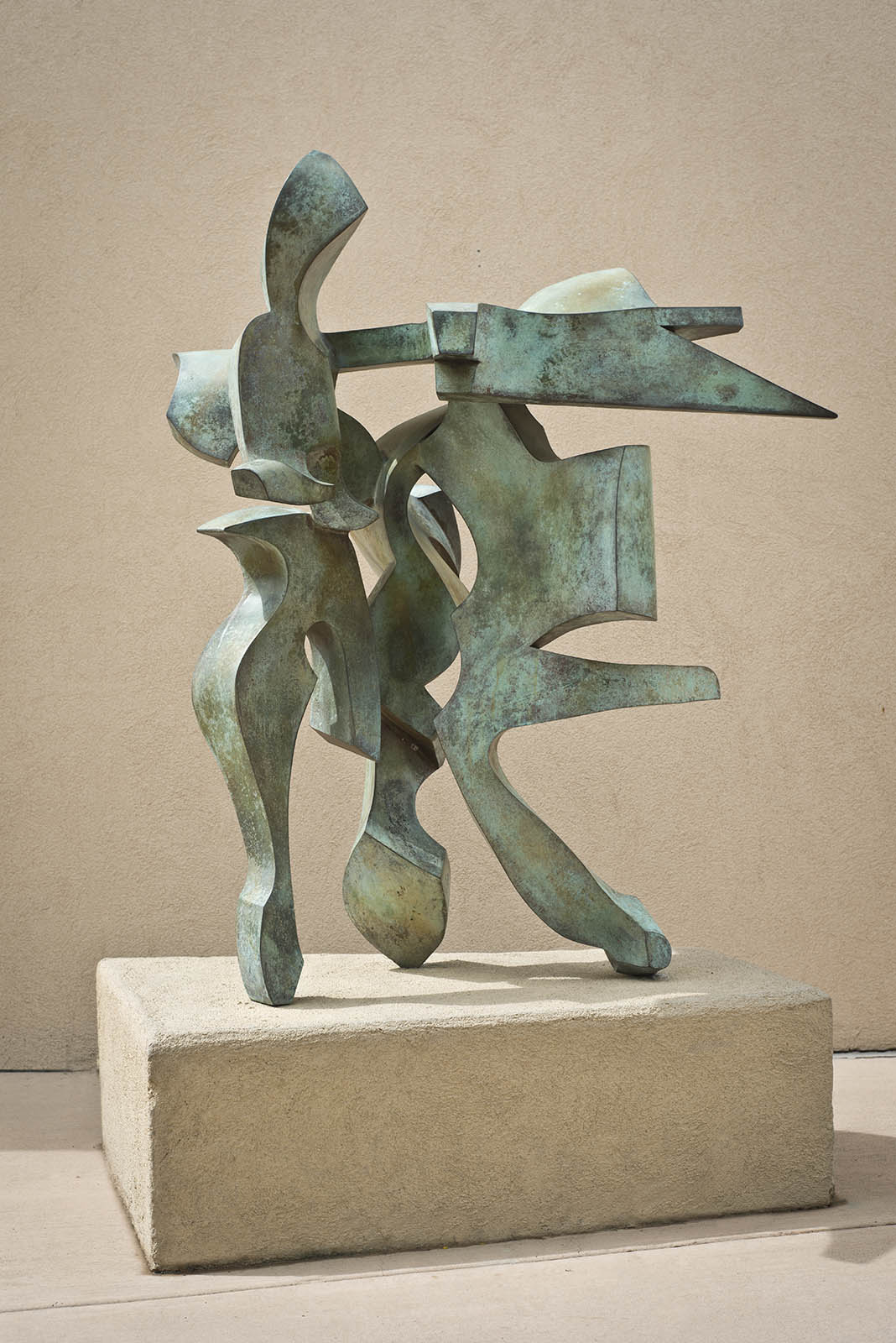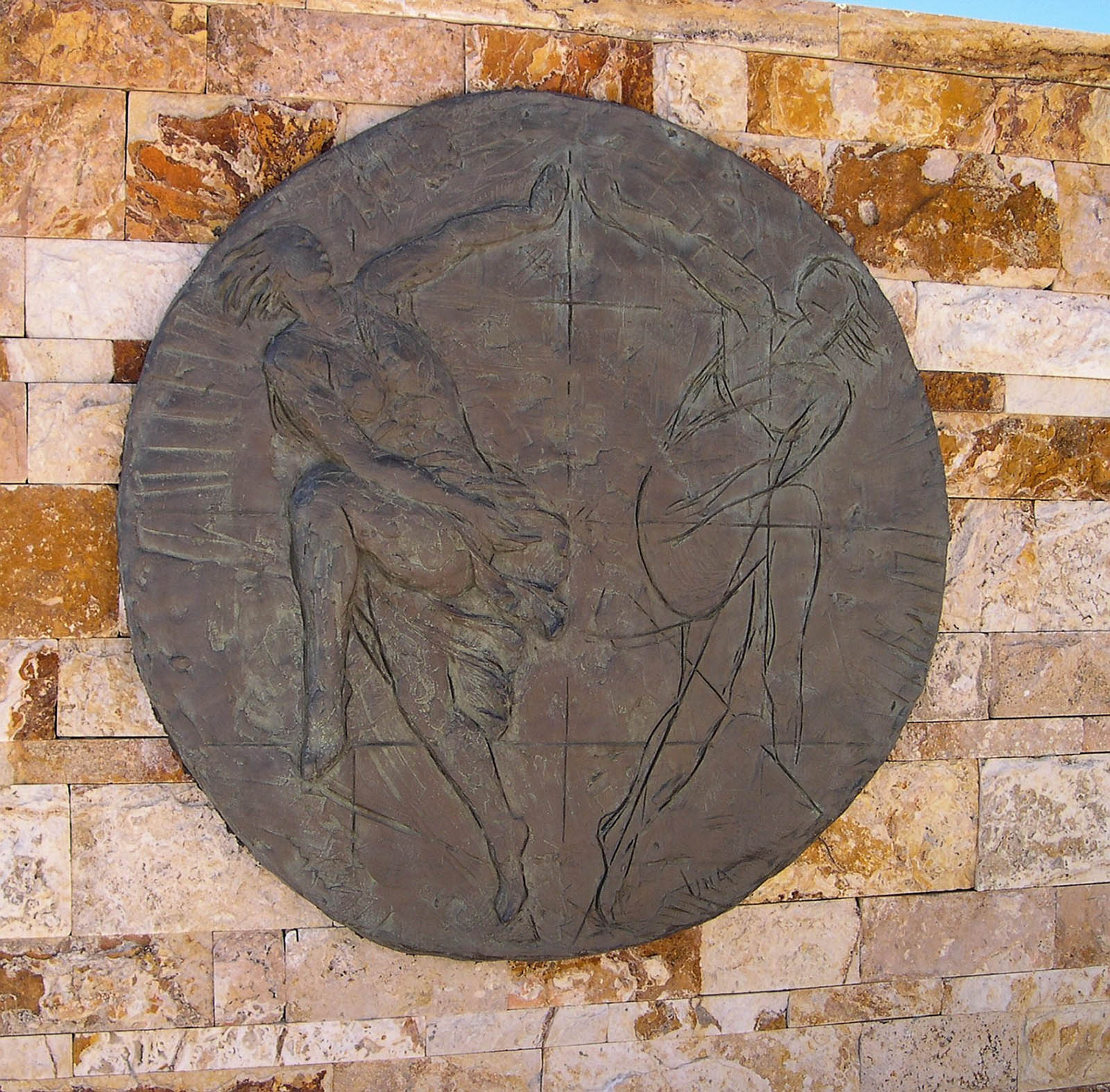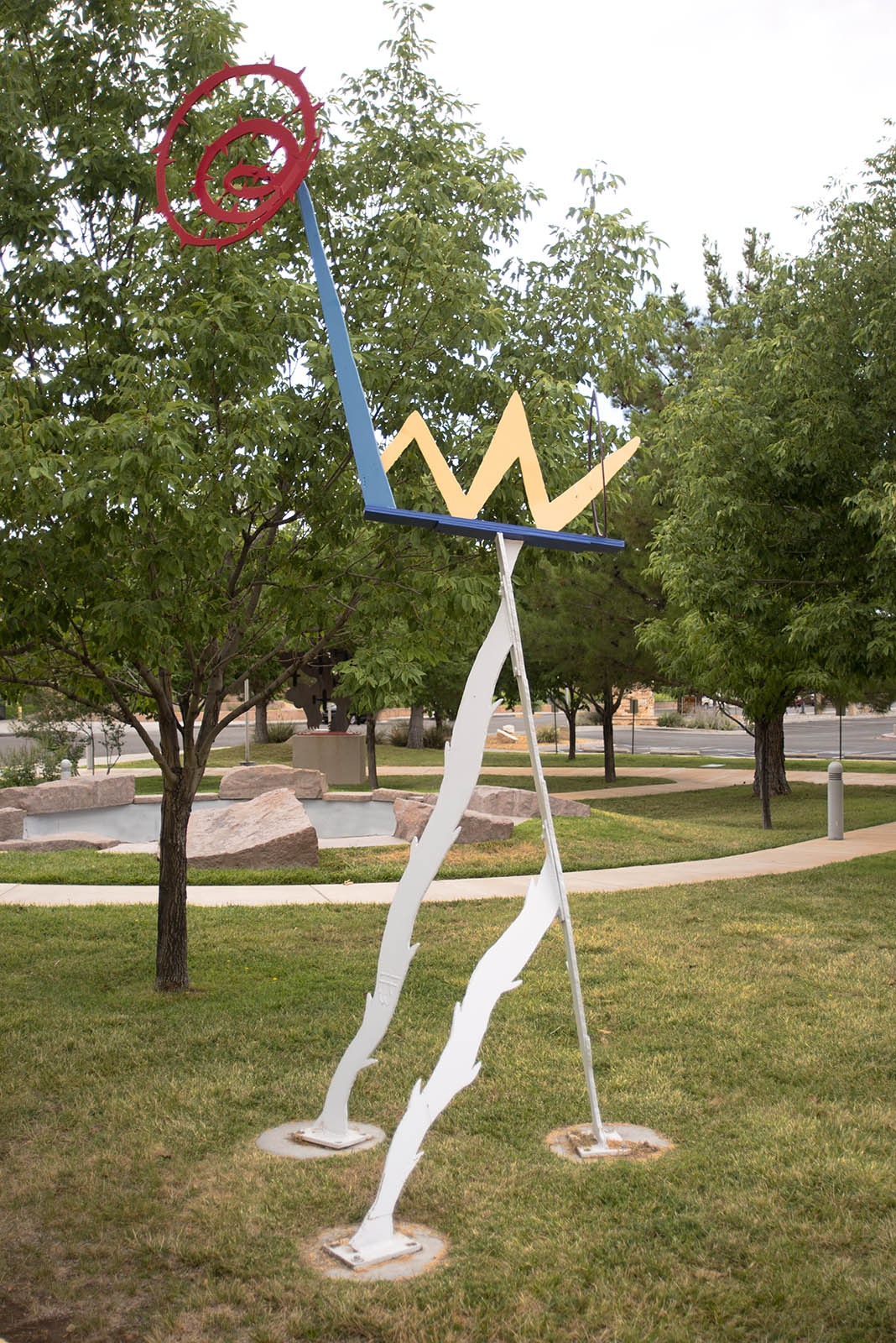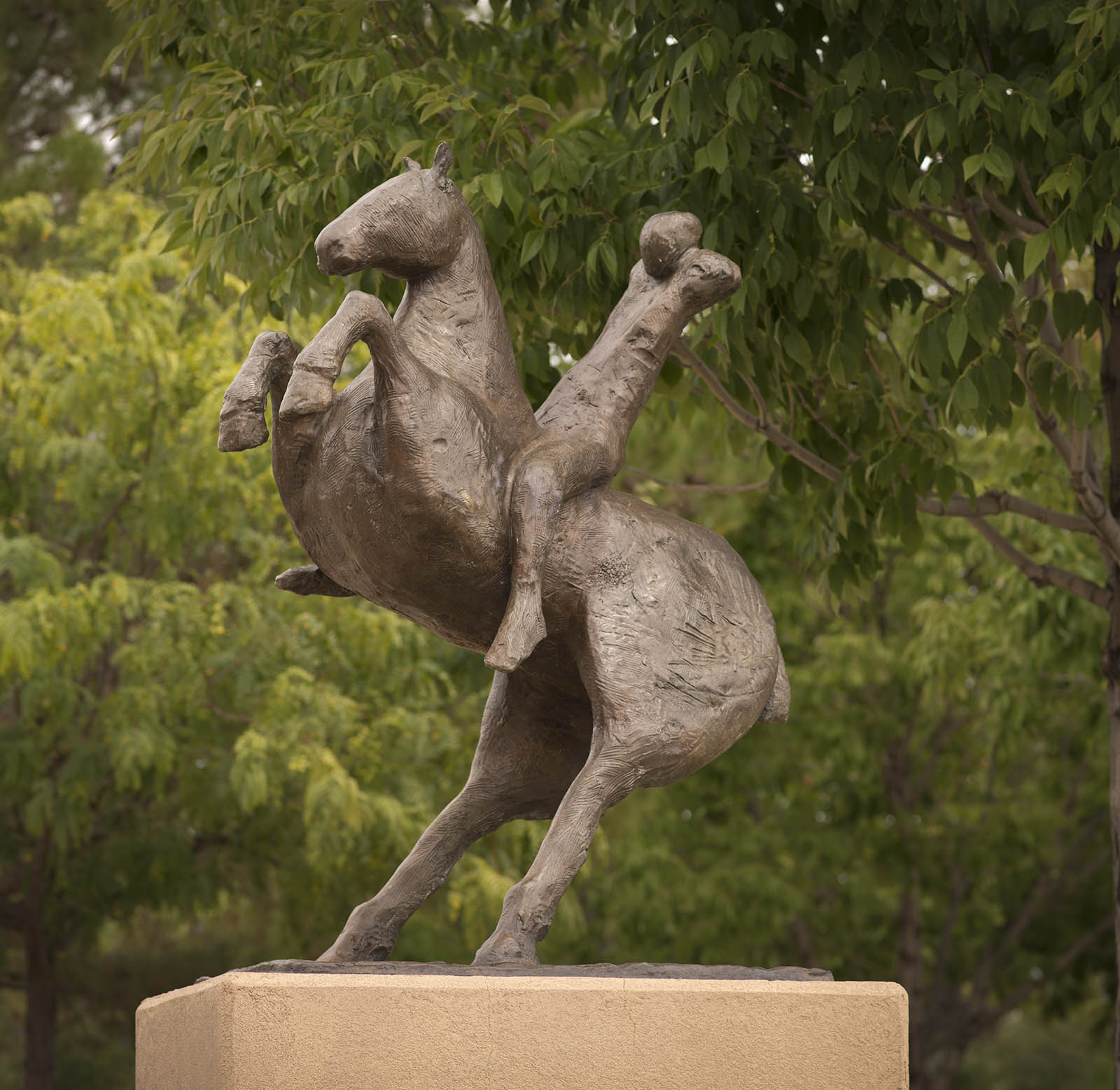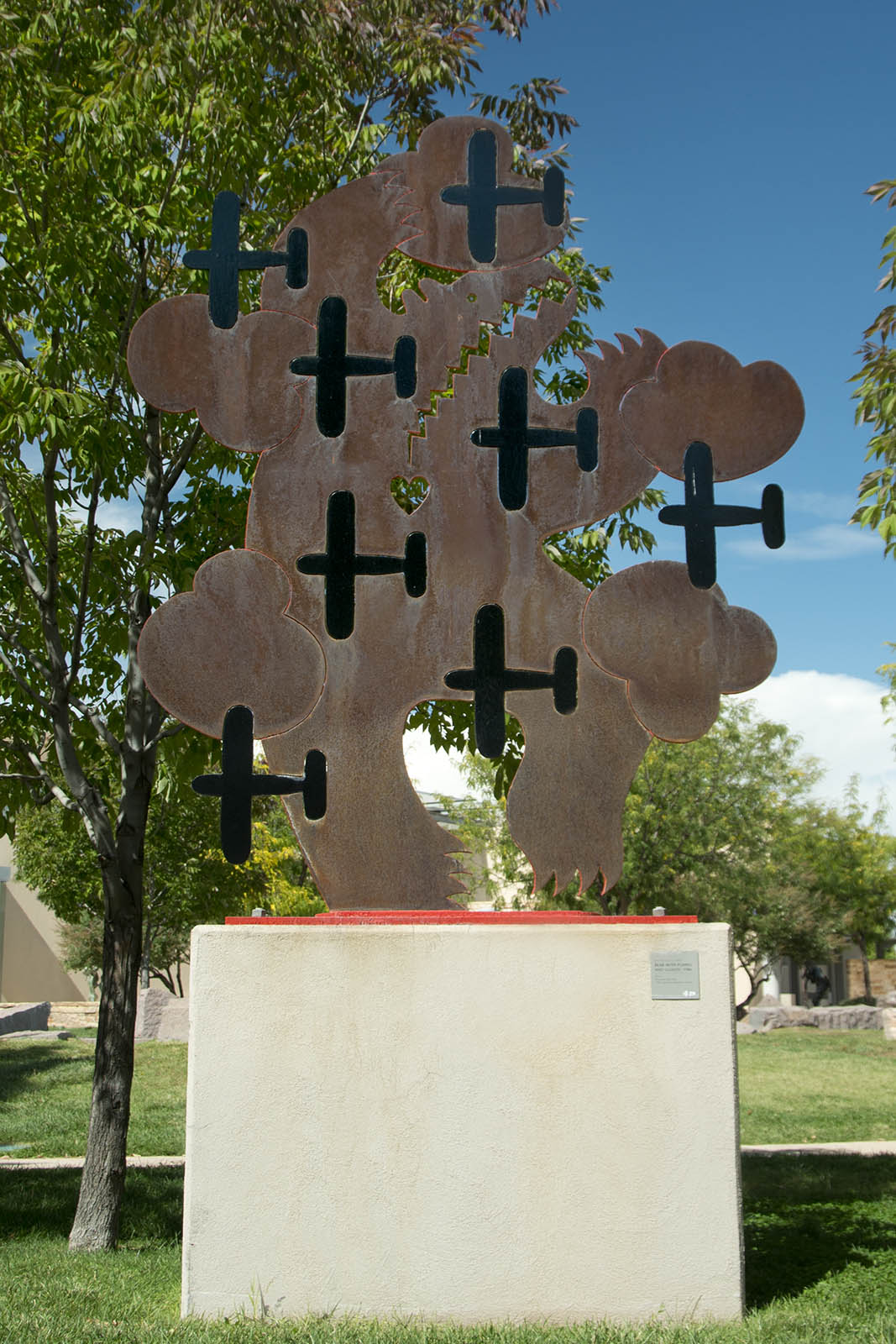East Sculpture Garden

The most prevalent conversation happening in the portion of the East sculpture garden facing Mountain Road is the exploration of scale. These large works range in materials and subjects, but each artist had to contend with the specific challenges of creating and installing such massive works. The Basque Sheepherder is a bronze figure that honors a specific way of life while famed Mexican artist, Sebastian, reflects on color, line and geometric form in his exploration of Pueblo architecture. The elegant lines of Ali Badoin’s Skater in the Wind demonstrate how he grappled with creating a sense of movement out of static materials.
Beginning with Glenna Goodacre’s Park Place and moving toward Oliver LaGrone’s Mercy, Michael Orgel’s Nurturance, and Allan Houser’s Prayer, this group of works features both the figure and organic forms to reflect on the importance of place, on the need people have to come together, on caring for family and each other, and on the cycles of life.
Further along the path, works like Tom Waldron’s Blue Tank and Jesús Moroles’s Floating Mesa make strong statements about the landscape of New Mexico and the diverse environments that make up our region. Water is a life source and is at the forefront of the dialogue raised by these works.
Moving toward Old Town, another set of sculptures demonstrate different ways that artists incorporate movement into their work. From the abstract work by Bill Barrett, to Michael Naranjo’s dancing figure, different cultures and approaches depicting dance and motion are revealed.
The East sculpture garden also includes two important works by Fritz Scholder and Bob Haozous. In different ways, these artists have been among those examining how Native Americans and their culture are depicted. Haozous’s Bear with Planes and Clouds addresses the impacts of the military and technology on culture and the environment. Scholder’s engagement with equestrian sculpture, common in both monuments and romanticized historical depictions of Indigenous peoples, demonstrates how he wanted to disrupt the expectations of both the art world and culture in the United States.
Click on an individual image to learn more or click the button below to view the gallery in order.

